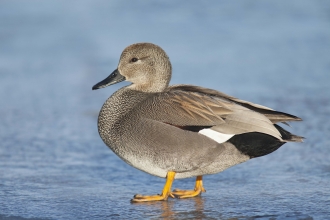An ambitious new project has been launched to gain insight into how waterfowl use reservoirs and lakes in Greater London. The project is thought to be the first of its kind and aims to provide information on the activities of the wintering wildfowl throughout – where they feed, where they roost, when they move and what routes they use. Four ducks have so far been tagged at Rye Meads Nature Reserve in the Lea Valley near Hoddesdon and the project is expected to expand to further water bodies in the Colne Valley and Heathrow in the New Year.
The ducks have been fitted with GPS trackers which will allow researchers to track their movements remotely as they move between water bodies in the Greater London area. The project, which is a partnership between Herts and Middlesex Wildlife Trust, Environment Agency, Lee Valley Regional Park Authority and Thames Water, will help to identify which water bodies are most important and will help researchers understand how best to manage these sites for waterfowl.

